Larry Racioppo’s Photographs Document Decades Of Change In Brooklyn
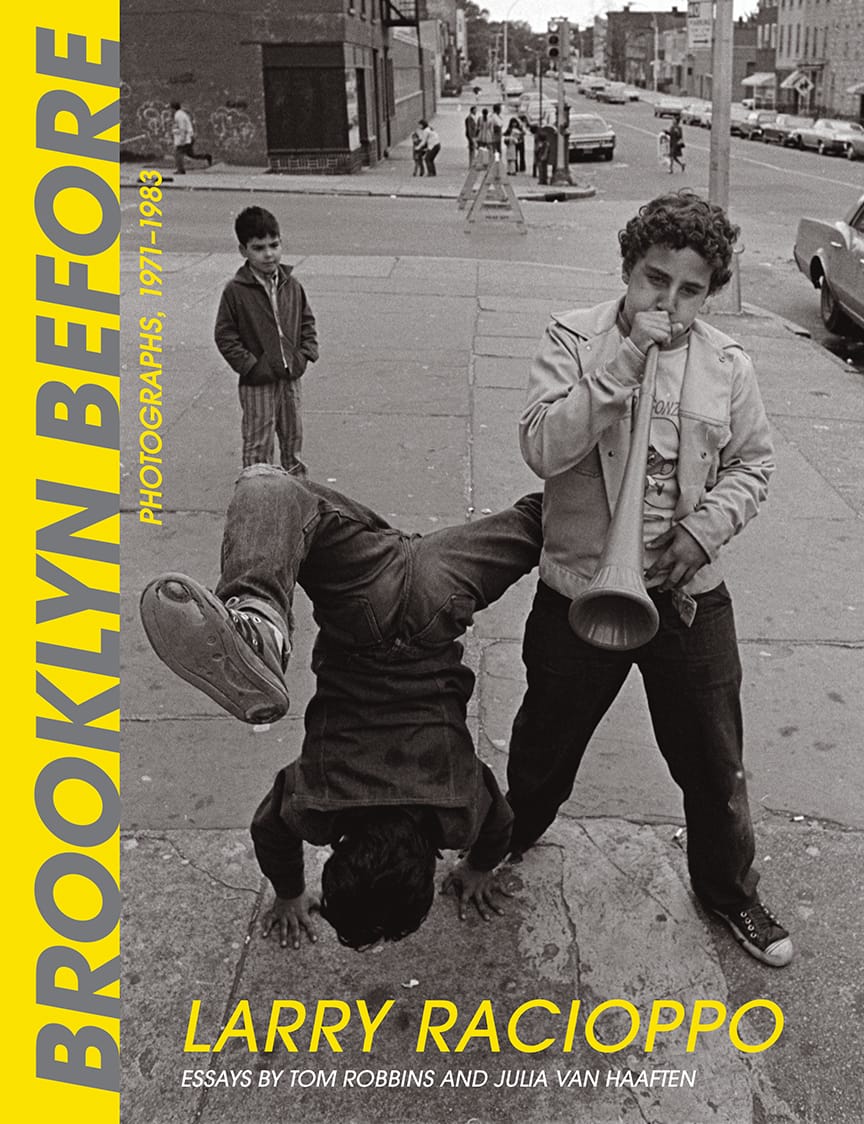
PARK SLOPE/SUNSET PARK – Photographer Larry Racioppo loves his native Brooklyn and has made it his life’s work for nearly 50 years to document the borough’s transforming neighborhoods as well as his family and friends who have called it home.
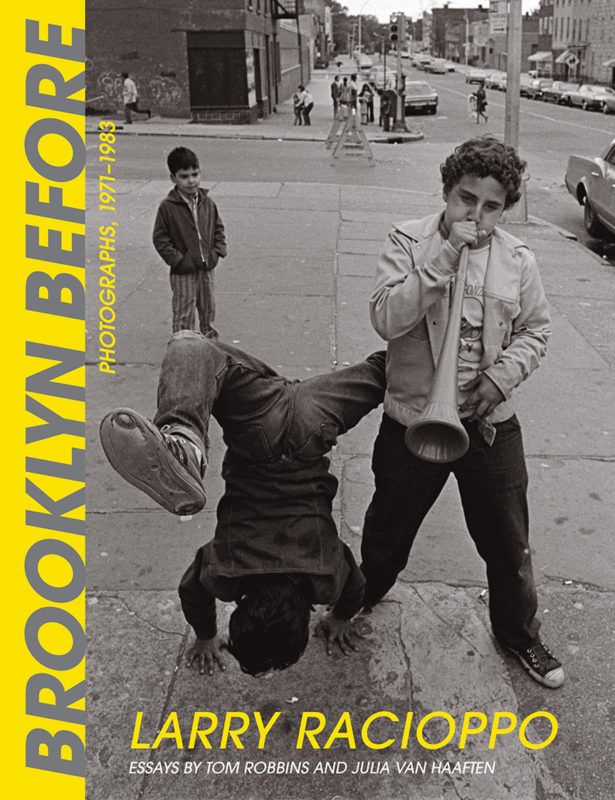
His latest book, Brooklyn Before, Photographs 1971—1983, was released earlier this year and illustrates a very different, pre-gentrification South Brooklyn filled with colorful characters and tight-knit communities. “In Brooklyn Before, Racioppo lets us see the vitality of his native Brooklyn, stretching from historic Park Slope to the beginnings of Windsor Terrace and Sunset Park,” according to Cornell University Press, publisher of Brooklyn Before. Racioppo’s 128 black-and-white photographs show “the intimacy and roughness of life in a working-class community of Irish American, Italian American, and Puerto Rican families…with honesty and insight.”
Born in South Slope, Racioppo’s family moved to 40th Street between 4th and 5th Avenues in Sunset Park when he was in second grade. “When I was born my parents had an apartment on 6th Avenue between Prospect Avenue and 17th Street,” he explained over the phone. “The building was torn down to build the Prospect Expressway.”
“My parents, my grandparents, all came from southern Italy,” he continued. “They worked as laborers. My grandparents never learned how to speak English. They had Italian friends that had Italian bakeries, Italian stores. They all settled in South Brooklyn and Sunset Park. My dad and five or six of my uncles were longshoremen. They all worked on the docks,” he recalled.
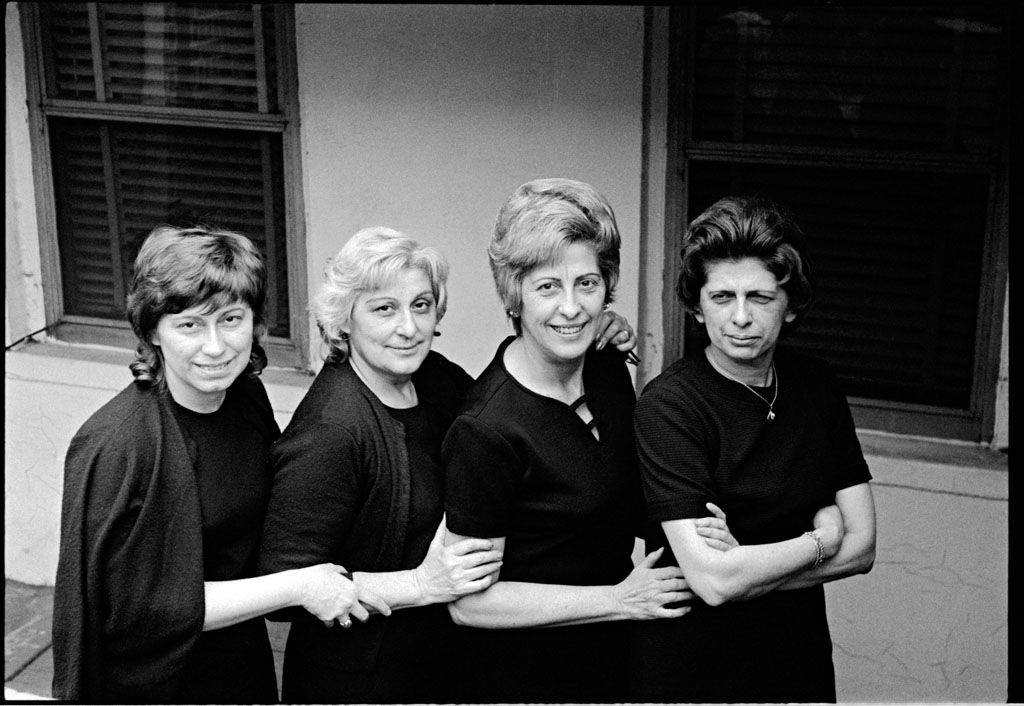
“We referred to it as ‘the neighborhood,'” he said of the area he grew up in, which serves as the setting for his book. “This vague thing, somewhere from 10th Street to 18th Street, from 4th Avenue to 6th Avenue. All my mother’s friends and cousins lived there. They were all from southern Italy.”
Unhappy at college after studying for three years at Fordham University in the Bronx, Racioppo decided to take time off, joined VISTA [Volunteers In Service To America] in 1968 and moved to San Jose, California for two years where he worked with teenagers in Santa Clara and helped build a youth center.
“Oh god, I changed my major every year,” Racioppo recalled. “I started as an English major, then history. I kept changing. I was kind of adrift. I went to college because it was the thing to do…. I was there for three years. The reason I stayed in college was because I played rugby. I loved playing and that was the best part about being in college for me.”
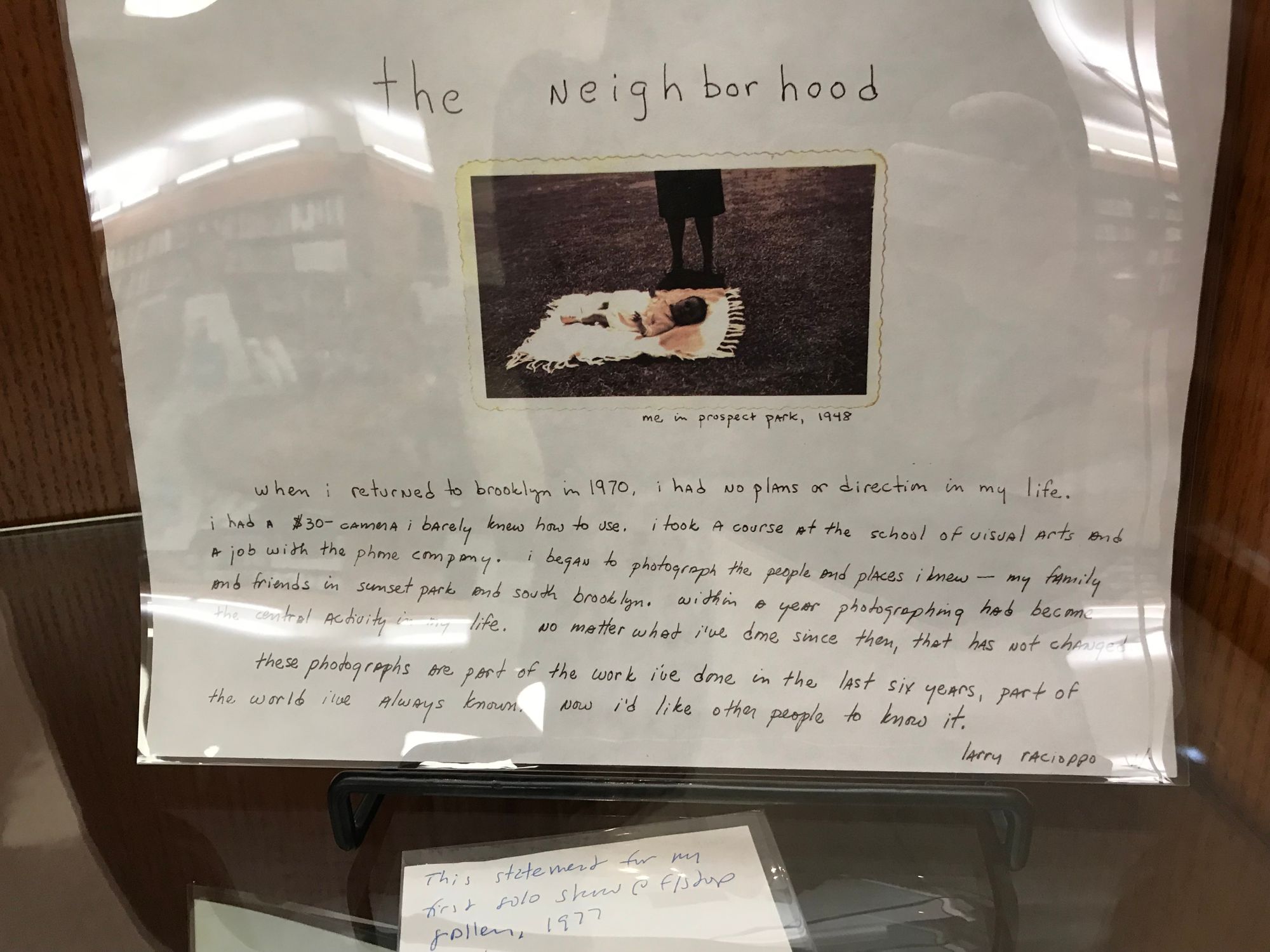
Racioppo, who frequently guest blogs for various websites, initially had different aspirations. “I wanted to be a writer long before I ever picked up a camera,” he said. “When I was at Fordham I had a few poems published in the school magazine, but I found that blank page so intimidating, it just killed me, so I started working with film.”
While still in California, Racioppo and a group of fellow VISTA volunteers “were fooling around” one day and shot a movie. During a visit back to the east coast, Racioppo continued his exploration with film. “I made one trip back to New York and I borrowed a friend’s camera,” he said. “I just walked around New York with a camera. It made me more focused, it heightened my awareness of my surroundings, and I enjoyed the experience. I like talking to people. I wasn’t really thinking about art or a career. It was something enjoyable to do.”
“One of my uncles was a great amateur photographer and filmmaker,” he continued. “He made all these family movies…like my aunts running around with their hair in curlers. I grew up with this stuff. It was kind of fun.”
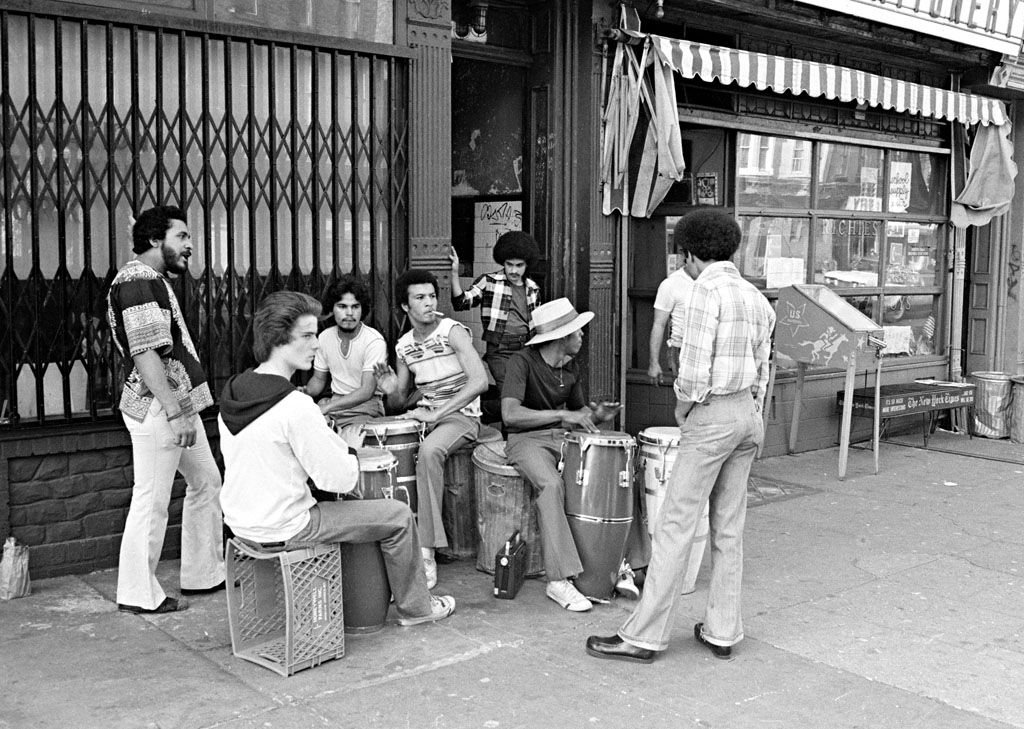
When he completed his work with VISTA, Racioppo bought a 35mm camera for $30 and a 1954 Nash Rambler for $120 and drove cross-country back to Brooklyn, visiting friends and photographing his experiences along the way. “When I came over the Verrazzano Bridge, I had $8 and a few rolls of film to process. I moved in with my folks [in Sunset Park].”
Uncertain about his next steps, he worked for the telephone company briefly before heading back to school in 1972. He originally planned to attend NYU Film School, but after learning that he’d have to repeat starting from his sophomore year, he decided to return to Fordham where he earned a B.A. in Communications. Racioppo later went on to earn a Master’s degree in Television/Radio Production at Brooklyn College.
Racioppo began voraciously photographing South Brooklyn upon his return to the borough, while taking on various jobs as a cab driver, photo assistant, and bartender to earn a living, renting various storefronts to use as a darkroom. “But no matter what I did to earn money, I kept photographing and printing, gradually creating a body of work rich in the feel of time and place—South Brooklyn in the 1970s,” he writes in the preface of Brooklyn Before. “I photographed whatever interested me—from kids playing in the streets to old men sitting in bars, from strangers on the subway to my relatives in their homes.”
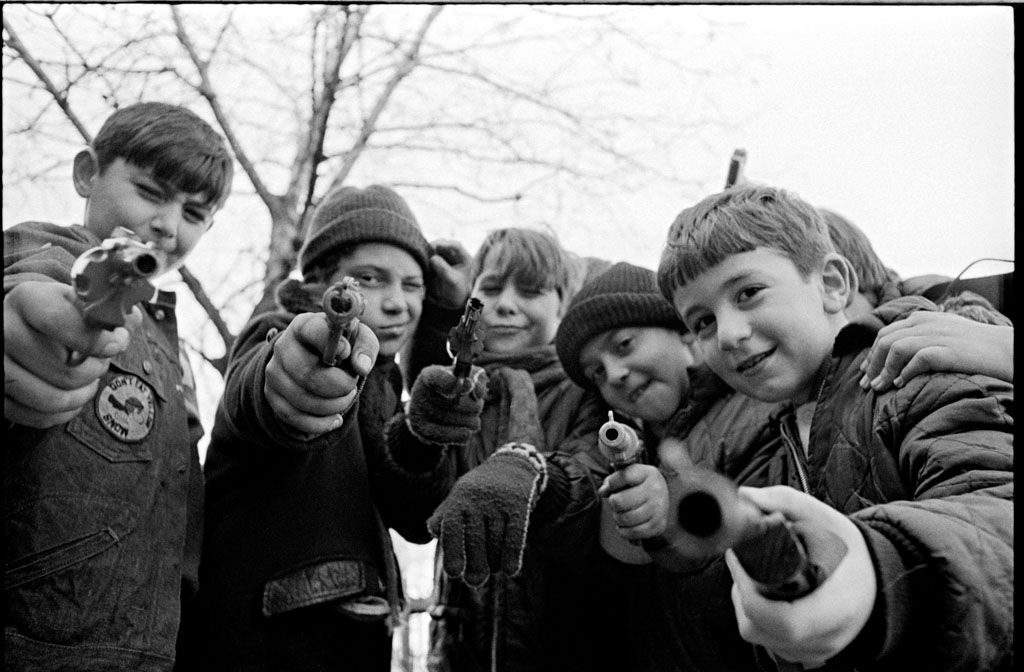
“The photographs I made between 1971 and 1983 document South Brooklyn before its gentrification,” Brooklyn Before‘s preface notes. “By 1972 inexpensive apartments in South Brooklyn were becoming hard to find, so I felt lucky to rent a small floor-through between 6th and 7th Avenues,” Racioppo writes in his introduction to the book’s “Fifteenth Street” chapter. “Most of the buildings on this block were three-story wood-frame houses occupied by several generations of Irish-, Italian-, and Puerto Rican American families. Just outside my door, there was so much to photograph.”
The artist lived on 15th Street from 1972-1977, before moving on to Union Street, then 10th Street (between 7th and 8th Avenues), and then 9th Street. “That was really the core of it at the time. My photographs are me just walking around between these places.”
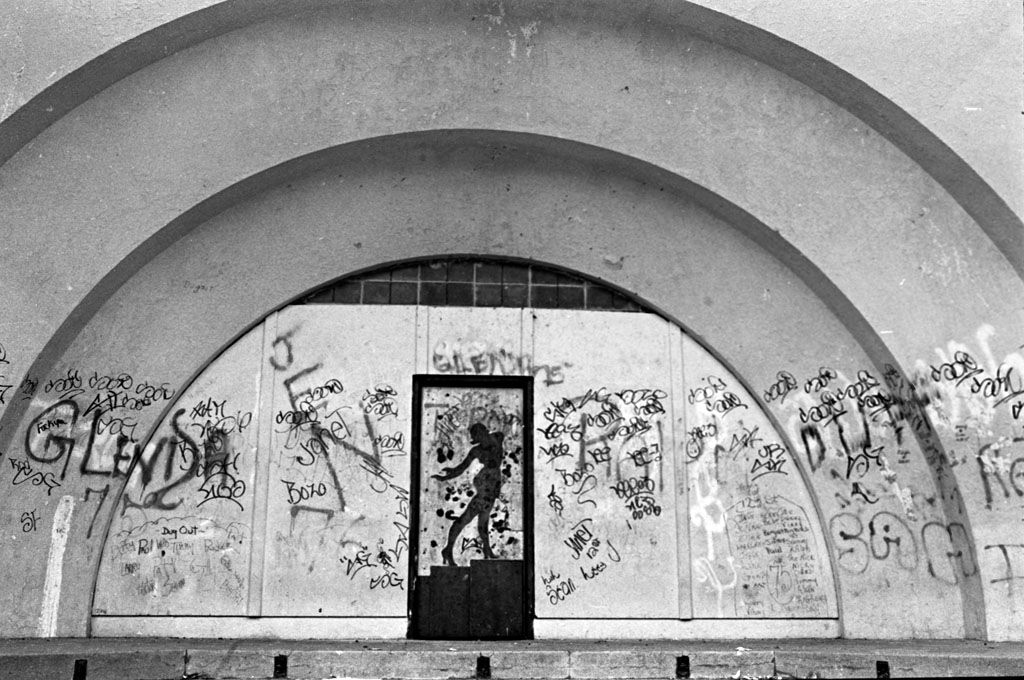
In a shocking reminder of how expensive the city has become for working artists, Racioppo reflected on one of the many darkrooms he has worked at over the years. “My brother was in a band called The Shirts,” he noted. “Back in the day he rented a storefront on 7th Avenue (near 51st Street) in Sunset Park. They would rehearse there and I turned the kitchen into my darkroom. I’d go there during the day to print, then the band would come to rehearse and I’d leave…. It was $100 a month. Eight or nine people chipped in for it. I paid about ten dollars a month.”
In 1977, Racioppo had his first solo exhibition at f/stop Gallery on 7th Avenue in Park Slope. In 1980, his first book, Halloween, was published. “I’ve been photographing every Halloween since the 70s,” the artist recalled. “I had a show in 1979…at a little gallery in the Lower East Side. Someone from Scribner’s read about the show in the Times and came and said we want to do a book.” The publisher printed approximately 6,000 copies of Halloween but did not release subsequent editions. “It’s held up over the years,” Racioppo noted. He continues to photograph Halloween revelers each year.
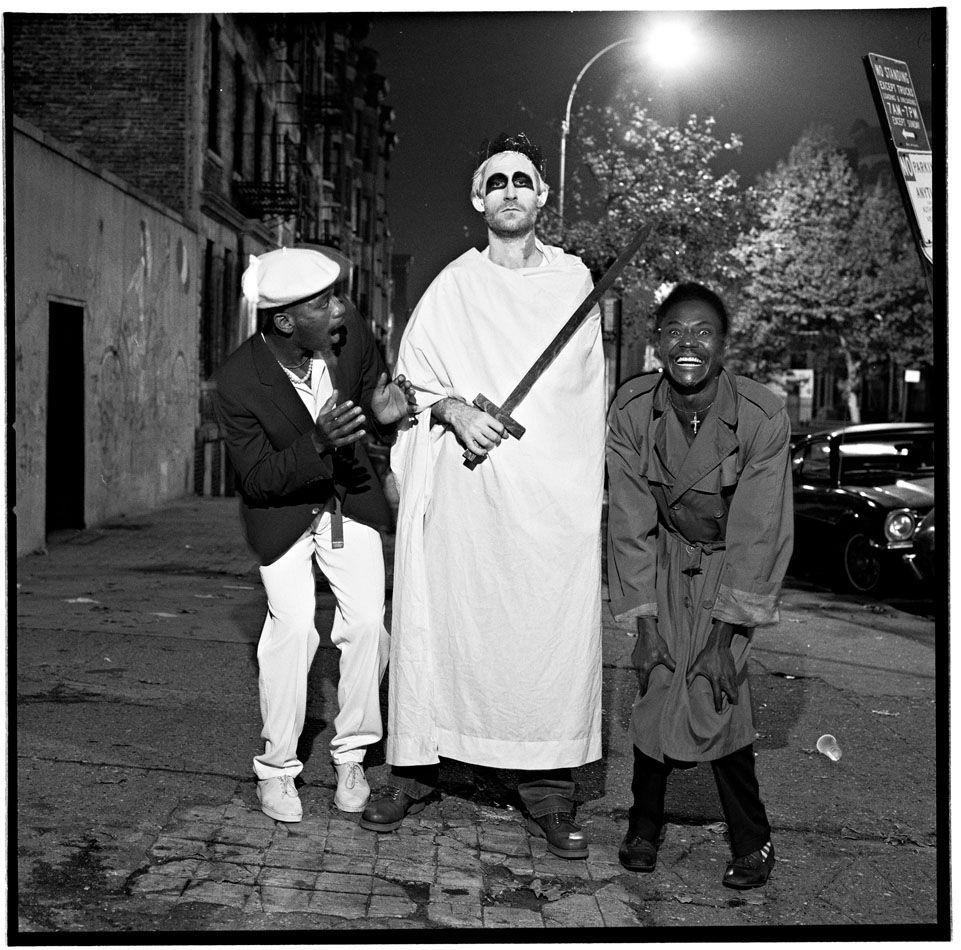
For much of the 80s, Racioppo worked as a carpenter. It was during one construction project that he met an NYC employee who eventually connected him to a job, with the NYC Housing and Preservation Department [HPD], that he would hold for twenty years. “HPD needed a photographer who knew construction and she asked me if I would do it,” he recalled of the fateful encounter. “I took this job. I couldn’t believe it. I photographed all through the city—housing conditions, construction…. I got to see the entire city. It was fascinating. I couldn’t believe how lucky I was—getting paid a modest amount to photograph all over.”
“I shot the whole Brooklyn waterfront—Williamsburg, all along Kent Avenue, the tremendous change of the waterfront,” he said when asked for some of his favorite projects shot in Brooklyn for the agency. “There’s a good chance that I photographed every vacant lot in Brownsville and East New York. They would give me maps and I would go out, spend two to three days, and take photographs, take notes.”
It was during his time at HPD that Racioppo started working on longterm before-and-after photo projects, documenting abandoned buildings including movie theaters (i.e., the Loews Bushwick), the Spook House at Coney Island, schools, and churches both before they were demolished and what’s become of those sites since. He shot the Church of St. Leonard in Bushwick before the building was torn down to be replaced by apartments and St. John’s Grammar School before it was transformed into condos.
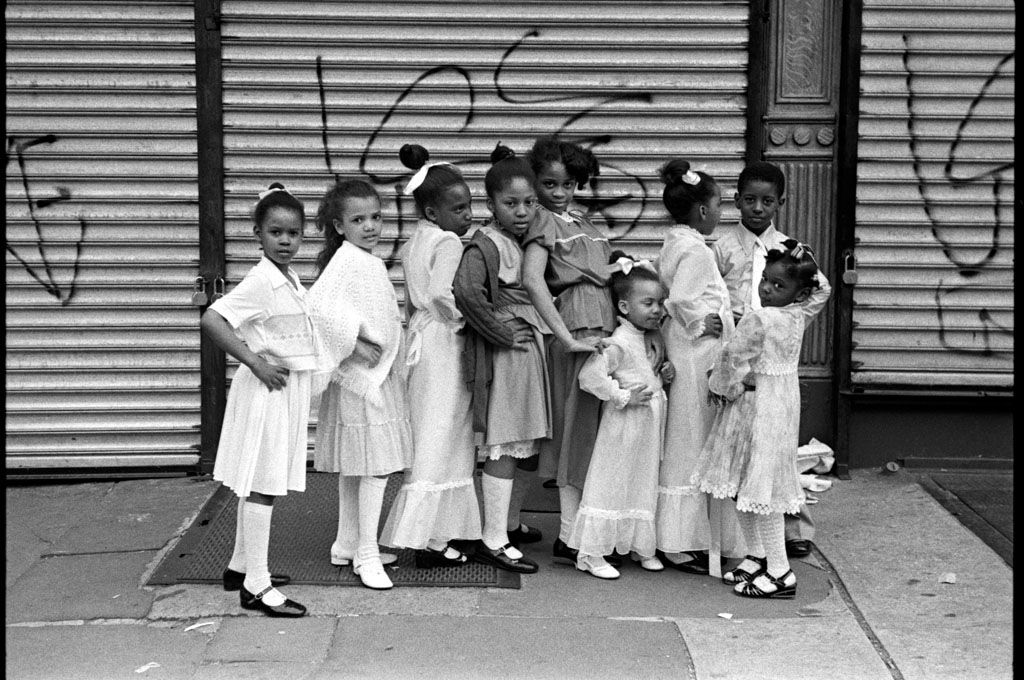
Connecting a subject’s history to its current-day context is something that Racioppo has done throughout his career. “I photographed my cousin’s daughter making her first communion and then [later] I photographed her wedding…the white dress, her little brother next to her. Her brother was her best man. This circle comes around.” [The photos can be seen here.]
The Brooklyn Public Library’s Central Branch will host an author talk with Racioppo on Wednesday, December 19 to coincide with his current retrospective at the library’s Brooklyn Collection. Racioppo told Bklyner he plans to discuss connections between his older work and his more recent photographs. “I’m trying to show how the original stuff paved the way for the current stuff,” he said.
Racioppo married in the 90s and moved from Brooklyn to Rockaway, Queens. With many family members still living in the area, he still visits the neighborhood often, proving you can take the Brooklynite out of Brooklyn, but you can’t take the Brooklyn out of him. “I go through Brooklyn all the time,” he said. “Every single project I do, without intending it to be about Brooklyn, Brooklyn is two-thirds of it.”
Though he retired from HPD in 2011, Racioppo still keeps busy. “Since I’ve retired, I’m mostly printing all the stuff I photographed and didn’t have time to print,” he said. Some of the current projects he’s working on include a book about street basketball, not so much the players, he noted, but more of the makeshift hoops they set up on lampposts. “I have these all over the city, and they are haunting,” said the former player. “It’s a real city book.”

The artist is also working on a project called Scrap, about NYC’s scrap industry. “I have these big panoramas of the sites [as well as images of] the guy pushing the shopping cart on 3rd Avenue [filled] with metal, pieces of an air conditioner,” he said. “To me it’s a fascinating topic. It’s about labor. It’s about capital. It’s about landscape. It’s about people.”
Along with the working-class and laborers, Racioppo has continually photographed religious rituals, vernacular architecture, and his family throughout the decades. “The things I was interested in when I first started, I’m interested in the same things now,” he explained. “I photograph some of the same topics—sometimes I’m even in the same places or neighborhoods. My interests have grown, my skills have grown, but my connection to these categories has stayed pretty much the same.”
While his subject matter stays consistent, Racioppo is not averse to change. “My biggest thing is change is the one constant. I think Brooklyn is changing all the time. I still think it’s great to be in Brooklyn,” he said before adding, “I think Brooklyn, like the city, is very tough if you’re poor. If you don’t have money now, it’s very tough. Like I was in my twenties, renting a floor-through apartment, working one or two days a week, that’s all I had to work. I could pursue my dream. Now my younger photography friends have three to four people sharing an apartment and they’re trying to find jobs, either in the field or out of it, to pay [their rent].”
He points to Industry City as an example. “I grew up right near there. It was a wasteland…. The change is amazing,” he said. “If you’re doing well, usually it’s good. If you’re struggling, it’s not so good.” Despite the changes and gentrification, Racioppo continues to love the borough. “Brooklyn is beautiful. It still, to me, is beautiful. I find it amazing.”
Brooklyn Before, Photographs, 1971-1983 was released September 2018
Larry Racioppo: A Retrospective is on view through Saturday, December 29.
Author Talk—Larry Racioppo is scheduled for Wednesday, December 19 at 7pm (reception at 6:30pm)
Brooklyn Public Library, Central Library, Brooklyn Collection (second floor), 10 Grand Army Plaza, Prospect Heights




